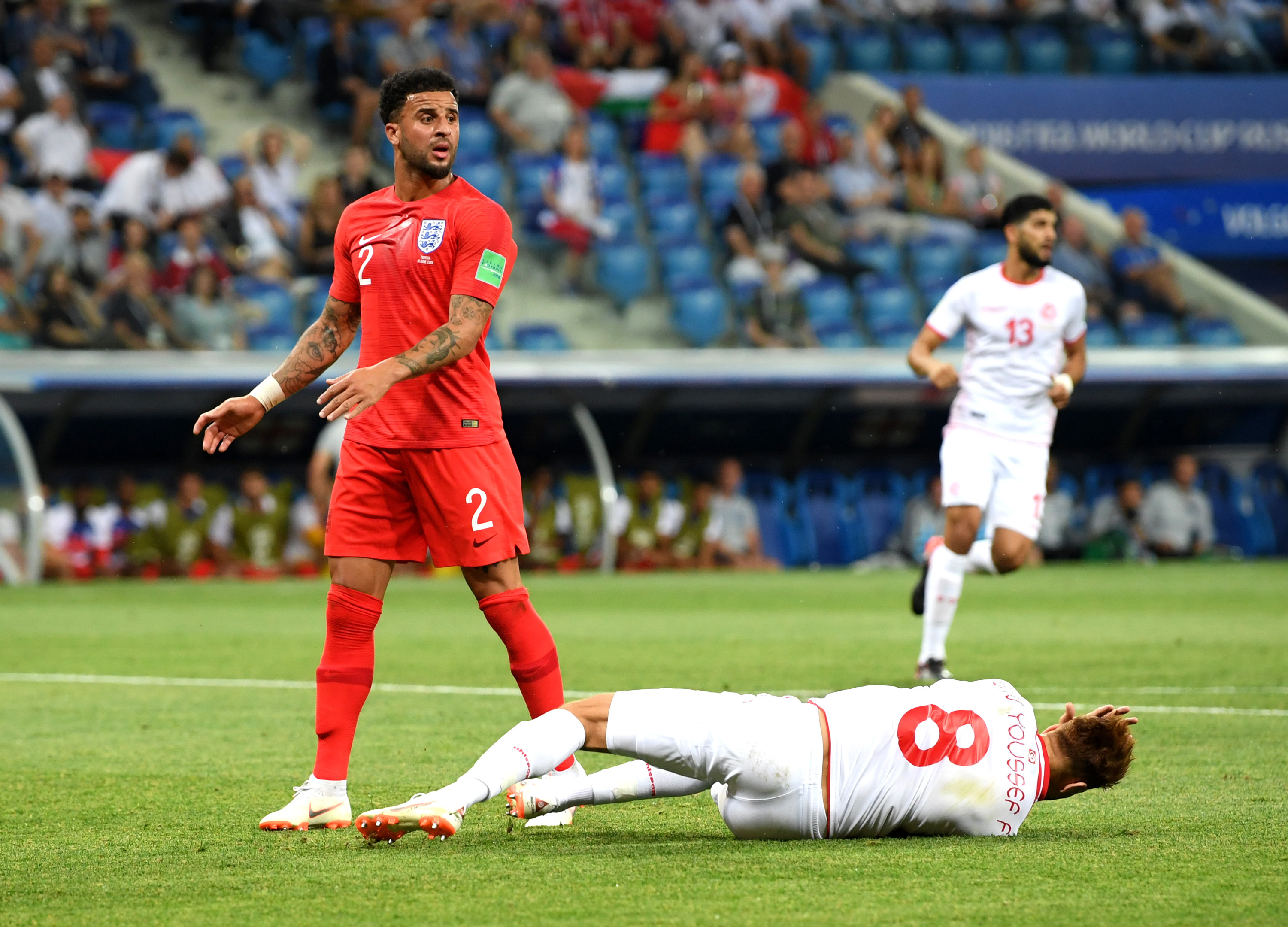
HARDLY a game goes by at these World Cup Finals where there hasn’t been an incident that has required intervention from VAR.
It makes you wonder how the game managed to get by without it for more than 150 years!
I can totally understand the benefits of VAR, and there is no doubt that it has been extremely helpful to the referees in Russia.
However, I asked myself on at least three occasions during England’s match with Tunisia game last Monday evening why it wasn’t used.
If ever there was a case, or cases, for it to be called in, then it was during that particular 90 minutes.
The way the Tunisians defended at corner kicks, and other set-pieces, was very risky.
Harry Kane was rugby-tackled to the ground – twice – in Volgograd, and should have been awarded a penalty kick on both occasions.
But the Colombian referee, Wilmar Roldan, waved play on.
Now, surely, if VAR is all about helping the actual whistler on the field of play, then the men in front of the television screens back at their Moscow HQ should have alerted the main man and allowed him to check for himself by reviewing the incidents on the pitch-side monitor?
Not in a million years could any right-minded football fan watch those incidents back and not agree that both were penalties.
So what exactly went on with VAR?
That said, for me, any referee worth his salt would not have needed the latest technology to realise the grappling on Kane merited at least one spot-kick.
I was under the impression that one of the directives from referee supremo, Pierluigi Collina, was to keep a close on eye on set plays, and penalise any grappling.
It’s clear the instructions are not being adhered to.
On this particular occasion, what saved Roldan and his colleagues was the fact that England won the game, thanks to Kane’s brilliantly-executed headed winner in stoppage time.
Had the score ended 1-1, then I’m sure Gareth Southgate and his players would rightly have been vocal in their thoughts about the match officials.
England also felt aggrieved about having a penalty awarded against them for Kyle Walker’s challenge
Well, I have to say I thought Walker caught the guy with his elbow and may have been fortunate to escape a red card.
But as much as the technology being used to help referees in this World Cup is moving in the right direction – we also got the right decisions via goal-line technology when France scored against Australia and Colombia netted against Japan – there is still much work to be done.
The main thing as I see it is that the interpretation of how VAR is used should be a little more transparent. More clarity is required.
It’s all well and good former top English referee, Mark Clattenburg, clearing one or two things up on ITV.
But he isn’t on the inside. In certain instances, he is only giving an opinion, not giving us facts.
He can give us a good insight, but he is not giving us the definitive – there is a huge difference.
We need to hear what Collina’s instructions to his refs are, and what they have to crack down on and where they should allow a bit of come and go.
We’ve seen a number of penalty-kicks, and plenty of free-kicks in and around the 25-yard mark, resulting in some tournament highlights, like Cristiano Ronaldo’s moment of magic for Portugal against Spain.
Overall, I think the standard of refereeing in Russia has been absolutely fine.
Yes, one or two could have been better but I don’t recall any howlers. I’d say it’s pretty much been acceptable.
What we don’t want to see happening is for the referees to be getting battered every day.
We want them to feel confident and have the courage and conviction to blow for a penaltyif it’s merited.
We don’t want them to play safe and rely on VAR for every big call.
I want them to be brave. They have the knowledge that VAR is there to assist them if they need it.
It’s not there to embarrass them.
So we will all be keeping a close eye on the referee’s performance in England’s second game, against Panama this afternoon.
I’m sure Gareth Southgate will make the officials aware of their duty to keep an extra eye on what goes on at set-plays.
England played well against Tunisia – but there is still much work to be done.

Enjoy the convenience of having The Sunday Post delivered as a digital ePaper straight to your smartphone, tablet or computer.
Subscribe for only £5.49 a month and enjoy all the benefits of the printed paper as a digital replica.
Subscribe